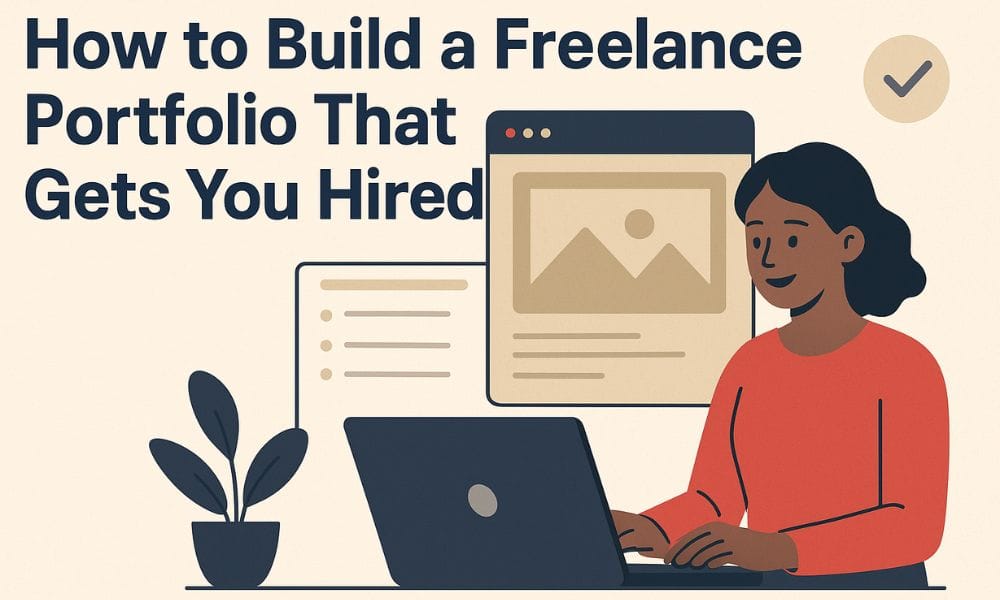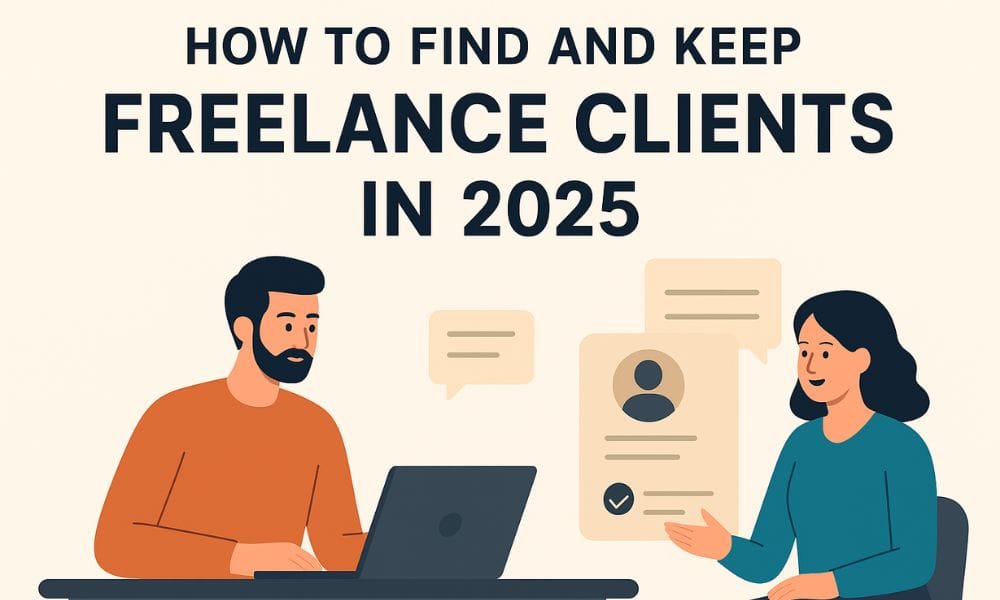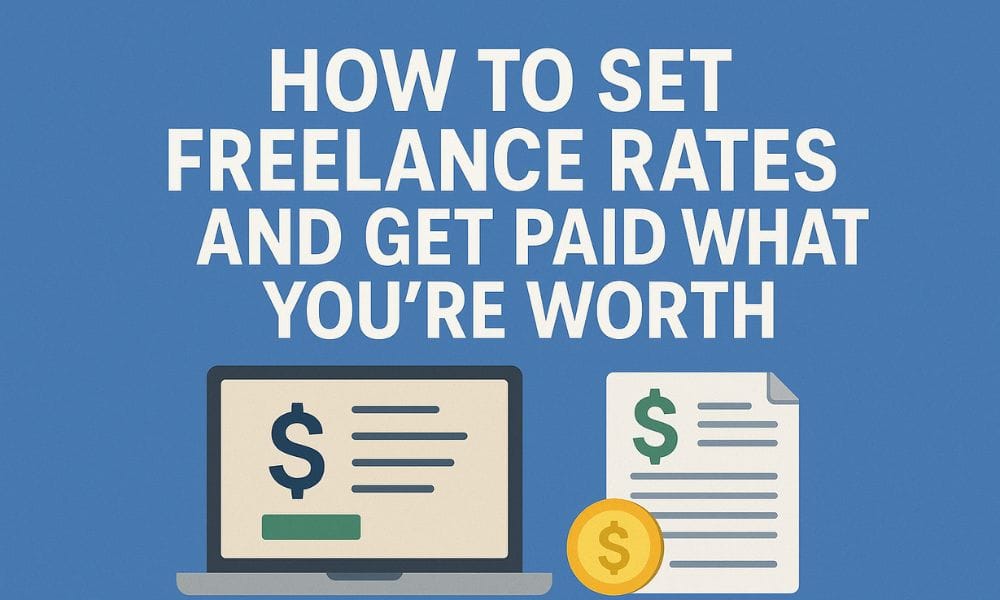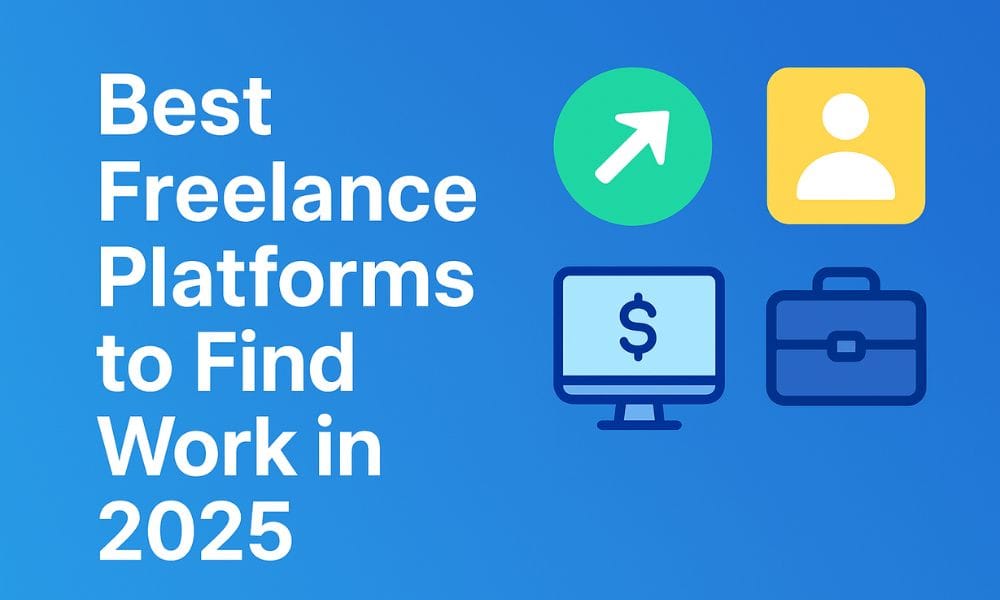If you’re trying to land clients but struggling to stand out, your freelance portfolio might be the missing piece. In 2025, clients no longer just want to see what you say you can do — they want to see proof. A strong, well-presented freelance portfolio shows your skills, process, and professionalism all in one place.
This guide will walk you through how to create a freelance portfolio that makes clients confident enough to hire you, even if you’re just starting out. If you’re new to freelancing, you can also read our Complete Guide to Freelancing for the bigger picture on how to build your career.
1. Why Your Freelance Portfolio Matters More Than Ever
In 2025, the market is more competitive than ever. Clients get dozens of proposals for every project. What separates you from the crowd is a portfolio that clearly shows your ability to solve problems and deliver results.
Your freelance portfolio isn’t just a gallery of your work — it’s a story about what you can do and how you do it. It gives potential clients a reason to trust you before they even talk to you.
If you want to sharpen your skill set before you start building your portfolio, check out our article on Top Freelancing Skills to Learn in 2025. Strong skills paired with a great portfolio are the fastest way to get noticed.
2. How to Create a Freelance Portfolio from Scratch
Don’t worry if you don’t have clients yet — everyone starts somewhere. Here’s how you can build your freelance portfolio from zero:
- Start with personal or mock projects. Create example work that solves a real-world problem in your niche.
- Include testimonials if possible. Even feedback from friends, classmates, or volunteer clients can help.
- Show your process. Include short descriptions that explain how you approached each project.
If you’re new to the industry, our post on How to Start Freelancing with No Experience covers how to get your first few projects to build your portfolio faster.
3. Choosing the Right Platform for Your Freelance Portfolio
There are many ways to host your freelance portfolio, and each option fits different needs.
Here are some of the best platforms to consider:
- Your own website (WordPress or Wix): Looks professional and helps with SEO.
- Notion: Simple and fast for text-based portfolios.
- Behance: Ideal for designers and visual artists.
- Dribbble: Great for creatives who want exposure.
If you’re just starting, don’t overthink it — pick one and start posting. The goal is to get your freelance portfolio online and visible, not to spend months perfecting it.
4. How to Structure Your Freelance Portfolio for Maximum Impact
A good structure helps clients find what they’re looking for quickly. Here’s a layout that works for almost any freelancer:
- Home Page: Brief introduction and key services.
- About Section: Who you are, your experience, and what makes your work unique.
- Work Samples: 3–6 of your best projects, with short case studies.
- Testimonials: Quotes from satisfied clients.
- Contact Page: Simple form or email so clients can reach you easily.
Your freelance portfolio doesn’t have to be fancy. Clean, clear, and easy to navigate is always better than complicated design.
5. How to Write Strong Case Studies
Case studies are the heart of a strong freelance portfolio. They show how you think and what results you deliver. For each project, write a short story that includes:
- The client’s problem
- The solution you provided
- The outcome or result
If possible, include data or visuals to show impact. For example:
“I redesigned a client’s website, improving load speed by 40% and doubling user engagement.”
It’s also smart to align your portfolio with your pricing strategy. Our How to Set Freelance Rates and Get Paid What You’re Worth guide explains how to connect your results to your value.
6. What to Include If You’re Just Starting Out
If you’re new, you might think you need big-name clients to fill your freelance portfolio — but that’s not true. Here’s what you can include instead:
- Sample projects: Create examples that show your best skills.
- Volunteer work: Offer to help a small business or nonprofit.
- Personal work: Include designs, blog posts, or code samples that demonstrate ability.
The key is quality over quantity. Three solid examples that show effort and creativity are better than ten weak ones.
7. Updating and Maintaining Your Freelance Portfolio
A strong freelance portfolio is never “finished.” Clients want to see your latest work and style. Schedule a quick update every few months to:
- Add new projects or testimonials
- Remove outdated work
- Refresh your design and copy
Keeping your portfolio current shows that you’re active and committed to your craft.
8. Promoting Your Freelance Portfolio Online
Once your freelance portfolio is ready, it’s time to get it in front of clients.
Here’s how:
- Share it on LinkedIn. Post a short story about each project and link to your portfolio.
- Add it to your Upwork or Fiverr profile. Many clients check portfolio links before hiring.
- Include it in proposals and emails. When you pitch to clients, a direct link to your portfolio adds credibility.
If you want tips on attracting clients, check out our article on How to Find and Keep Freelance Clients in 2025. You can also explore LinkedIn Learning for quick courses on personal branding.
9. Common Mistakes Freelancers Make with Portfolios (Updated)
Even talented freelancers sometimes lose opportunities because of small mistakes in their freelance portfolio. Here’s what to avoid if you want yours to stand out:
- Adding too much at once. When you overload your portfolio, clients get distracted. Keep only the best examples that show your strongest work.
- Forgetting to guide visitors. Every portfolio should give a clear next step — like where someone can message you or request a quote.
- Sounding too generic. Your freelance portfolio should reflect your voice and approach, not read like a copy-paste template.
- Ignoring how it looks on phones. Many clients browse on mobile, so make sure your site loads fast and looks clean on smaller screens.
Fixing these simple issues can instantly make your portfolio more professional and more likely to convert views into real clients.
10. Checklist: Build a Freelance Portfolio That Gets You Hired
Here’s a simple list you can follow to stay focused:
✅ Choose 3–6 strong samples
✅ Add short case studies for each project
✅ Include testimonials and contact info
✅ Use clean design and clear text
✅ Keep it updated every few months
✅ Share it on your profiles and proposals
Following this checklist will make your freelance portfolio look professional and client-ready.
FAQs About Freelance Portfolios
1. What should a beginner include in a freelance portfolio?
Sample work, mock projects, or volunteer work that shows your skills. Focus on quality, not quantity.
2. Do I need a website for my freelance portfolio?
Not necessarily. Platforms like Behance or Notion work fine when you’re starting. A website is ideal later for branding.
3. How many samples should I show?
Three to six solid examples are enough. Choose work that highlights different strengths.
4. Should I include prices in my freelance portfolio?
No — discuss pricing privately. Direct clients to your How to Set Freelance Rates guide instead.
5. How often should I update my portfolio?
Every 3–6 months or after any big project.
6. Can I include work done for free?
Absolutely. As long as it represents your skills, it counts.
7. What makes a portfolio stand out?
Clarity, results, and personality. Clients should quickly understand what you do and why you’re different.
8. Should I include client names?
Only with permission. If not, describe the project in general terms.
Final Thoughts
Your freelance portfolio is more than a showcase — it’s your strongest sales tool. It tells clients what you’re capable of and gives them a reason to trust you.
Start small, focus on your best work, and keep improving over time. Even if you only have a few examples now, that’s enough to start landing projects.
For more on building your freelance business, check out the Complete Guide to Freelancing.
Keep learning, keep creating, and let your work speak for itself — that’s how you build a portfolio that truly gets you hired.



